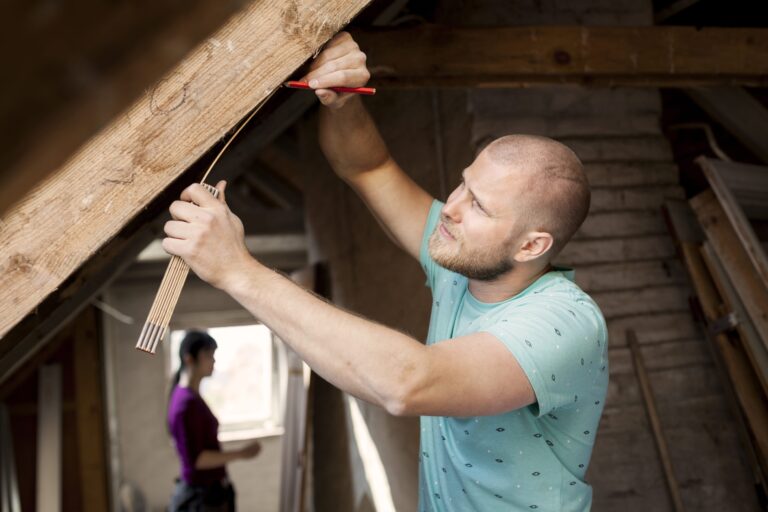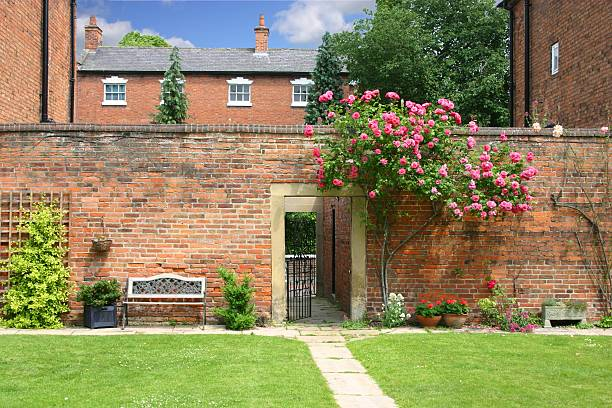Get A FREE Quote Now
Click the button below to receive your complimentary, no-obligation quote from our local specialists.
Do you need planning permission for a loft conversion? The short answer: Not always.
But you’re not here for the short answer. Extending your property via a loft extension is an involved process, and there are questions that you’ll want answering along the way. That’s where Loftera comes in.
By the end of this article, you’ll be much more confident in answering the question yourself.
First and foremost, did you know that the majority of loft conversions in the UK do not require planning permission? This is because they tend to fall within the permitted development requirements. However, it goes without saying that you’ll need to gain planning permission should your building work exceed these limits. Don’t worry, we’ll delve into further detail shortly on what these limits are.
Loft Conversion: Do I Need Planning Permission?
If you are committed to converting or extending your loft, you’ll want to familiarise yourself with rules of permitted development. Our immediate advice would be to speak with a qualified architect or builder to confirm whether your plans fall within the required boundaries. They will want the work, so will be absolutely truthful with you.
Before making that call, keep in mind that a loft conversion does fall into the permitted development requirements and you shouldn’t require planning permission as long as the below criteria is met:
- For detached semi-detached properties, the new loft space must not exceed a 50 cubic metre area. This area reduces to 40 cubic metres for terraced houses
- Your loft conversion must not extend beyond the parameter of the front of the property
- Your building work mustn’t extend higher than the existing roof
- Verandas, balconies and raised platforms will need to be disclosed as they may require planning permission
- The extension must look similar to the existing elements of the house, so be sure to use matching materials
- Side-facing windows must not be visible through and be at least 170cm above the ground
- All roof extensions cannot overhang the original outer wall of the property
Should your desired plans fall foul of any of the above limitations, we’re afraid to say that you will require planning permission. However, in today’s digital world, that isn’t a bad thing. It used to be a case of having to go and visit your local council, or heaven forbid pick up the phone and discuss your building requirements. Today, you can simply fill out a form online and your local authorities will come back to you with a decision or to ask for further information. Easy!
We should also mention that the above requirements are for those living in houses. Should you live in a flat, converted house, maisonette or other non-dwelling buildings, you’ll most certainly require planning permission.
Do I Need Planning Permission For A Dormer Loft Conversion?
There are many differing types of dormer loft extensions that homeowners tend to opt for, each with their own advantages. Alternative designs come with alternative dimensions, and so the type of loft conversion that you commit to, will have a huge impact on whether you require planning permission.
Let’s get down to the nitty gritty of some of the more popular design concepts.
Rear Dormer Loft Conversion
In the UK, the most popular type of loft conversion is a rear dormer. It is constructed facing the back of the property, usually where the garden is found, and therefore offers homeowners with the privacy that they require.
A rear dormer lost extension tends to be big enough for an additional bedroom with an en suite, or even an office or extra living room.
In order to stay within the aforementioned permitted developments regulations, any fitted rooflights must not exceed the slope of the existing roof by more than 150mm.
It is extremely rare for this type of loft conversion to add more than 40 cubic metres in area, which fits safely within the permitted development rulings.
Hip-to-Gable Loft Conversion
Hip-to-Gable loft extensions are unique in that they tend to be completed on properties built in the earlier 1900s. Usually required on semi-detached houses, the hipped roof means that there is no gable present – hence the name.
The current ridgeline is required to be expanded to form a new gable, with the area in question usually falling in and around the 50 cubic metres required to carry out the work without acquiring planning permission.
Get A FREE Quote Now
Click the button below to receive your complimentary, no-obligation quote from our local specialists.
L-Shaped Loft Conversion
Usually found in Victorian houses where the roof is in two sections, an L-shaped loft conversion looks exactly as it sounds.
The larger roofed area tends face the rear of the property, with the smaller roof lower down. The best news? Permitted development gives a thumbs up to extending both roof sections.
With the L-shape design, two rooms can be fitted, opening an array of opportunities to homeowners who want to extend their current property as opposed to moving into a bigger space. Naturally, to comply within the permitted development regulations, the building work must not exceed the aforementioned 50 cubic metres.
The main benefit of this type of loft conversion is that it can add so much living space to an existing property without requiring planning permission.
Velux Conversion
If you’re fortunate enough to live in a property with a ridge height exceeding 250cm, then a Velux conversion is the perfect solution for you. They are often the least expensive options, and take the least amount of time to build. With no roof alterations required, you will not need planning permission for this, and can extend your living space inside your home without having to build upwards or outwards.
Planning Permission: The Finances
If you have read the above and come to the conclusion that you will require planning permission before having the building work carried out, the time has now come to think through the finances involved.
Depending on where in the UK you are based, planning application costs can vary somewhat. In England, an application for an extension starts at £206, and can be acquired for as low as £190 in Wales.
We’re only too aware of how much it can cost to complete a loft conversion, and having to pay around £200 before any work begins goes to show that planning your finances is of huge importance. Our recent blog on how to finance an extension should help you make the financial decisions you need.
How Long Does Planning Permission Take?
It goes without saying that once you have committed to building work of this magnitude, you want to get started as quickly as possible. So how long does planning permission for a loft conversion actually take?
Your local council is expected to work as quickly as possible on your application, and you shouldn’t have to wait any longer than eight weeks. This time can be extended to up to three months for more complexed building plans, and up to four months if an Environmental Impact Assessment is to be completed.
Building Regulations: What You Need to Know
Planning permission is one thing, but no matter the size or design of your loft conversion, you will absolutely be required to meet building regulations.
Don’t panic, building regulation are there with your safety in mind. Any work carried out must be structurally sound, fire safe and well insulated. Sounds reasonable enough to us.
In terms of fire safety, smoke alarms will be required as well as fire-resistant doors. Any new walls will need to support the existing roof and floor joists will also be required to support the weight of the newly built room. With us discussing a loft conversion, new stairs will be required, and the sound insulation must be of the required standard.
Party Wall Agreements
If the work that you are carrying out involves a boundary adjoining the property of a neighbour, it will fall under the Party Wall Act.
To begin with, you’ll be required to give notice to your neighbour of your intention to carry out the work (that’s just being neighbourly, right?), as well as a detailed proposal.
Hopefully, they will give the work the green light and we move onto the building work. However, should they not grant permission, this is when you’ll need to bring in a specialist party wall surveyor.
Don’t worry, it isn’t as complicated as it sounds. We have recently written a blog detailing party wall surveyor costs, give it a read and put your mind at ease. Fear not, as long as the building work is reasonable, your neighbour can’t actually prevent you from proceeding.
Hopefully after reading our blog, you are now closer to knowing whether you will require planning permission for your loft conversion. Our advice is always to speak with the professional and be open from the offset. They want your business, so they aren’t going to try and trip you up along the way.
Plan ahead, get your finances in order, and reap the rewards once the work is completed.
Get A FREE Quote Now
Click the button below to receive your complimentary, no-obligation quote from our local specialists.




